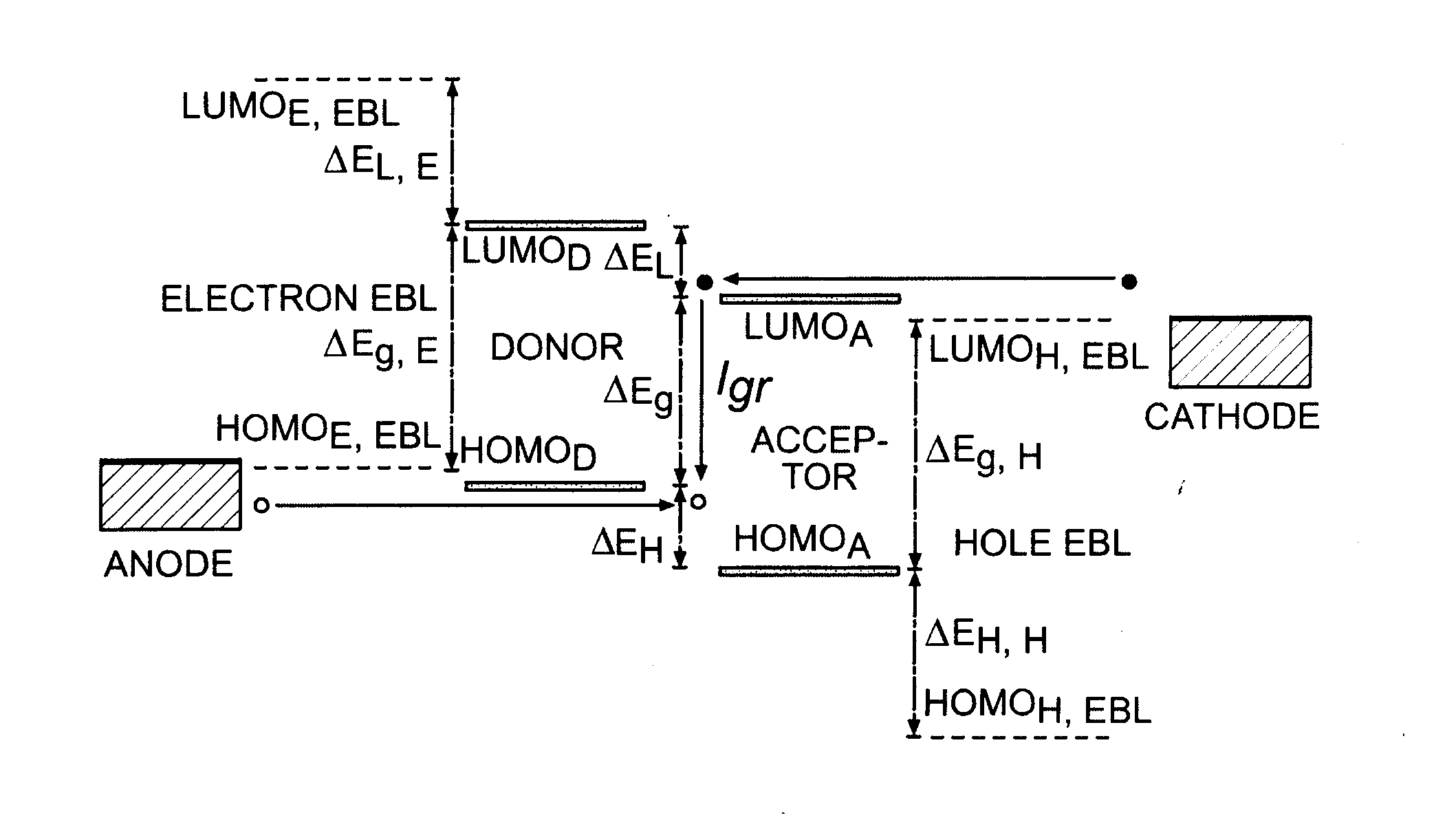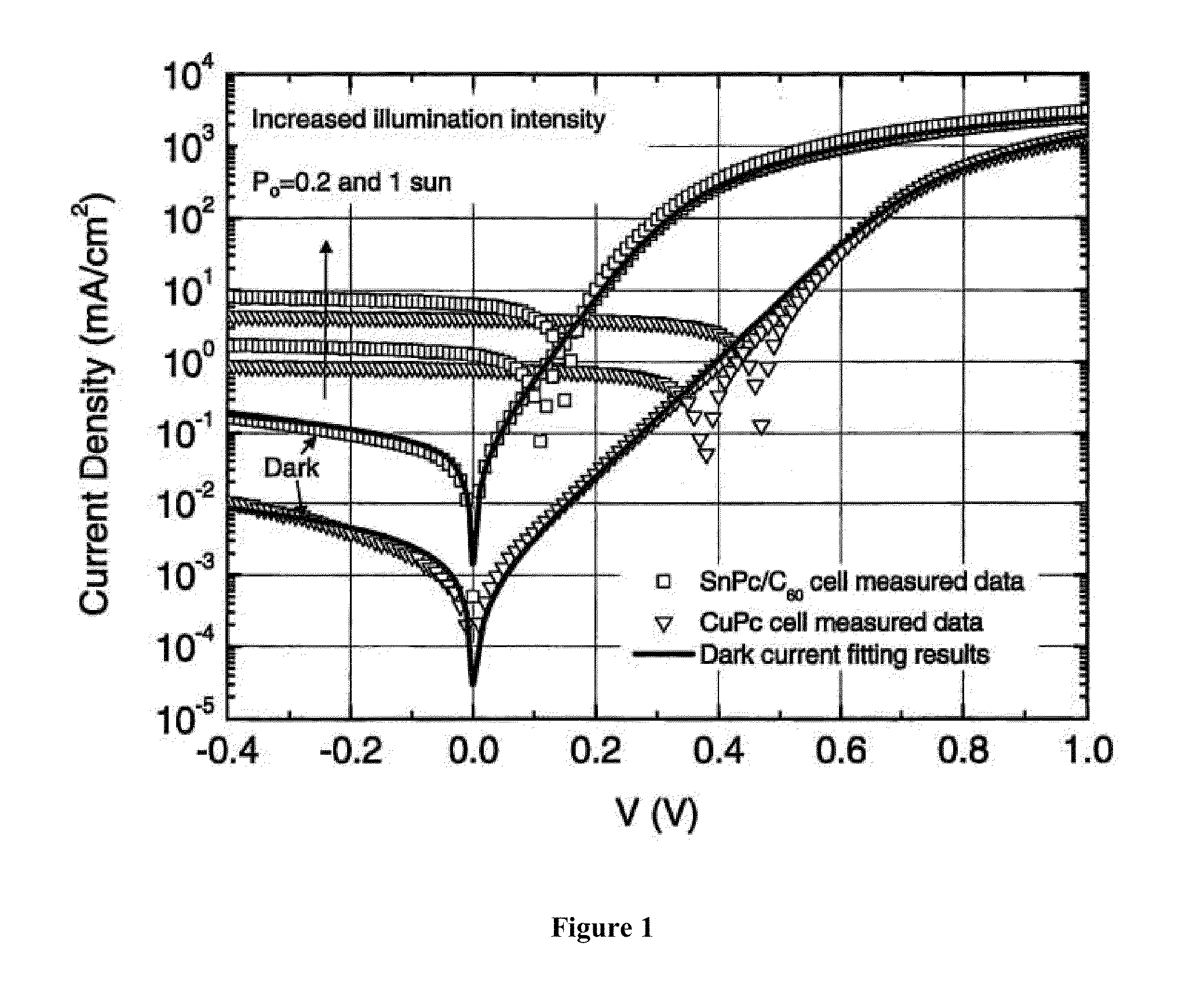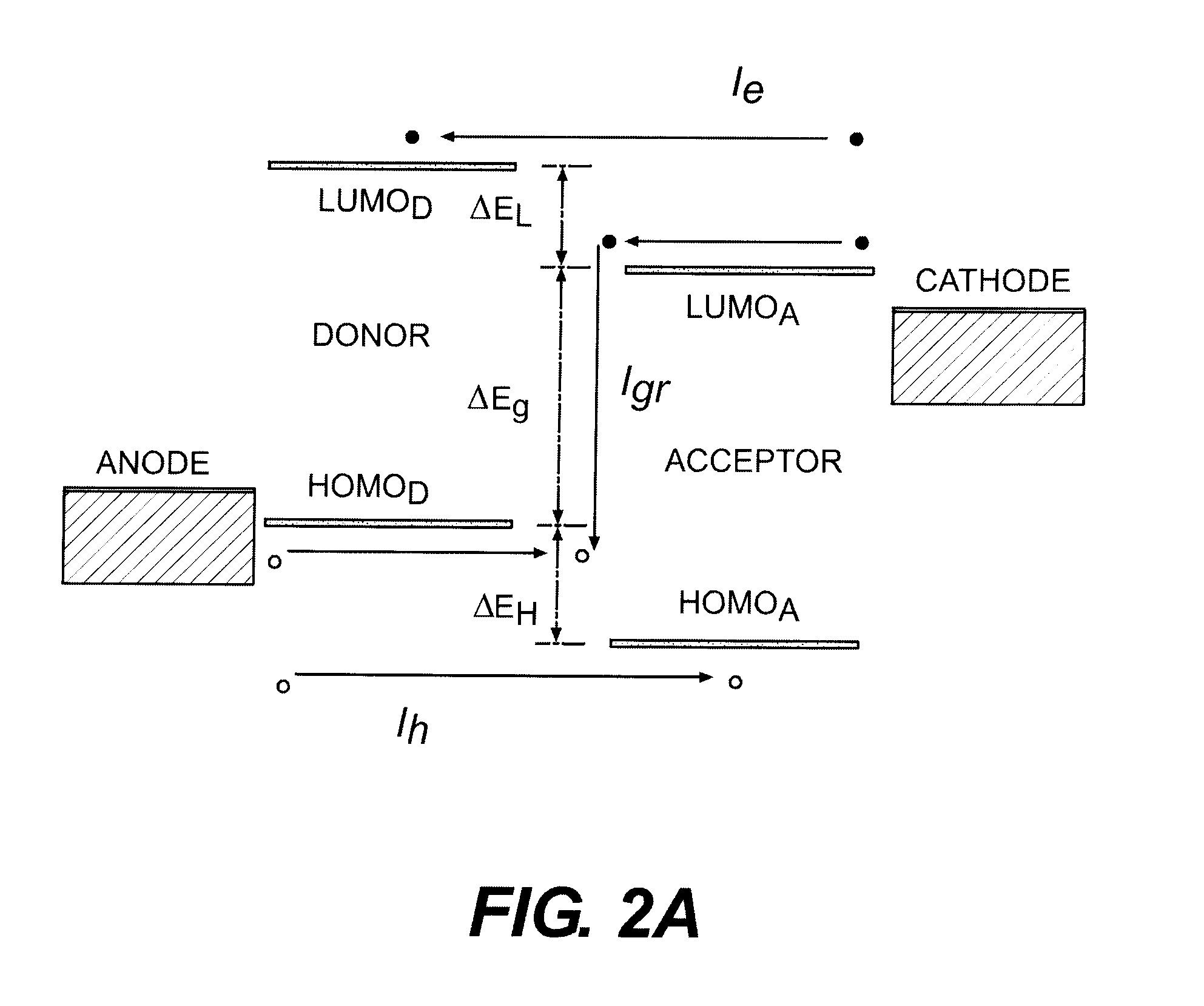Enhancement of organic photovoltaic cell open circuit voltage using electron/hole blocking exciton blocking layers
an organic photovoltaic cell and exciton blocking technology, applied in thermoelectric devices, solid-state devices, nano-informatics, etc., can solve the problems of difficult and expensive production of efficient crystalline-based devices, low power conversion efficiency of photosensitive optoelectronic devices, and low efficiency of crystalline-based devices. achieve the effect of increasing the open circuit voltage of the device, reducing the dark current, and increasing the power conversion efficiency of the devi
- Summary
- Abstract
- Description
- Claims
- Application Information
AI Technical Summary
Benefits of technology
Problems solved by technology
Method used
Image
Examples
example 1
[0098]Devices were prepared on 1500-Å-thick layers of ITO (sheet resistance of 15 Ω / cm2) precoated onto glass substrates. The solvent-cleaned ITO surface was treated in ultraviolet / O3− for 5 min immediately before loading into a high vacuum chamber (base pressure −7 Torr), where the organic layers and a 100-Å-thick Al cathode were sequentially deposited via thermal evaporation. The deposition rate of the purified organic layers was ˜Å / s. (Laudise et al., J. Cryst. Growth, 187, 449 (1998).) The Al cathode was evaporated through a shadow mask with 1 mm-diameter openings to define the device active area. The current density versus voltage (J-V) characteristics were measured in the dark and under simulated AM1.5G solar illumination. Illumination intensity and quantum efficiency measurements were conducted using standard methods employing an NREL calibrated Si detector. (ASTM Standards E1021, E948, and E973, 1998.)
[0099]FIG. 1 shows the current density-voltage (J-V) characteristics of an...
example 2
[0101]To decrease JS, and hence increase VOC in a SnPc / C60 cell, an electron blocking EBL was inserted between the anode and the SnPc donor layer described in Example 1. According to the energy level diagram in the inset of FIG. 2, the electron blocking EBL should (i) have a higher LUMO energy than the donor LUMO, (ii) have a relatively high hole mobility, and (iii) limit dark current due to generation and recombination at the interface with the donor resulting from a small electron blocking EBL (HOMO) to donor (LUMO) “interfacial gap” energy. Following these considerations, the inorganic material MoO3, and boron subphthalocyanine chloride (SubPc) and CuPc were employed as electron blocking EBLs. (Mutolo et al., J. Am. Chem. Soc., 128, 8108 (2006)) According to their respective energy levels (FIG. 2), they all effectively impede electron current from the donor to the anode contact. MoO3 has previously been used in polymer PV cells to prevent reactions between ITO and the polymer PV ...
PUM
 Login to View More
Login to View More Abstract
Description
Claims
Application Information
 Login to View More
Login to View More - R&D
- Intellectual Property
- Life Sciences
- Materials
- Tech Scout
- Unparalleled Data Quality
- Higher Quality Content
- 60% Fewer Hallucinations
Browse by: Latest US Patents, China's latest patents, Technical Efficacy Thesaurus, Application Domain, Technology Topic, Popular Technical Reports.
© 2025 PatSnap. All rights reserved.Legal|Privacy policy|Modern Slavery Act Transparency Statement|Sitemap|About US| Contact US: help@patsnap.com



